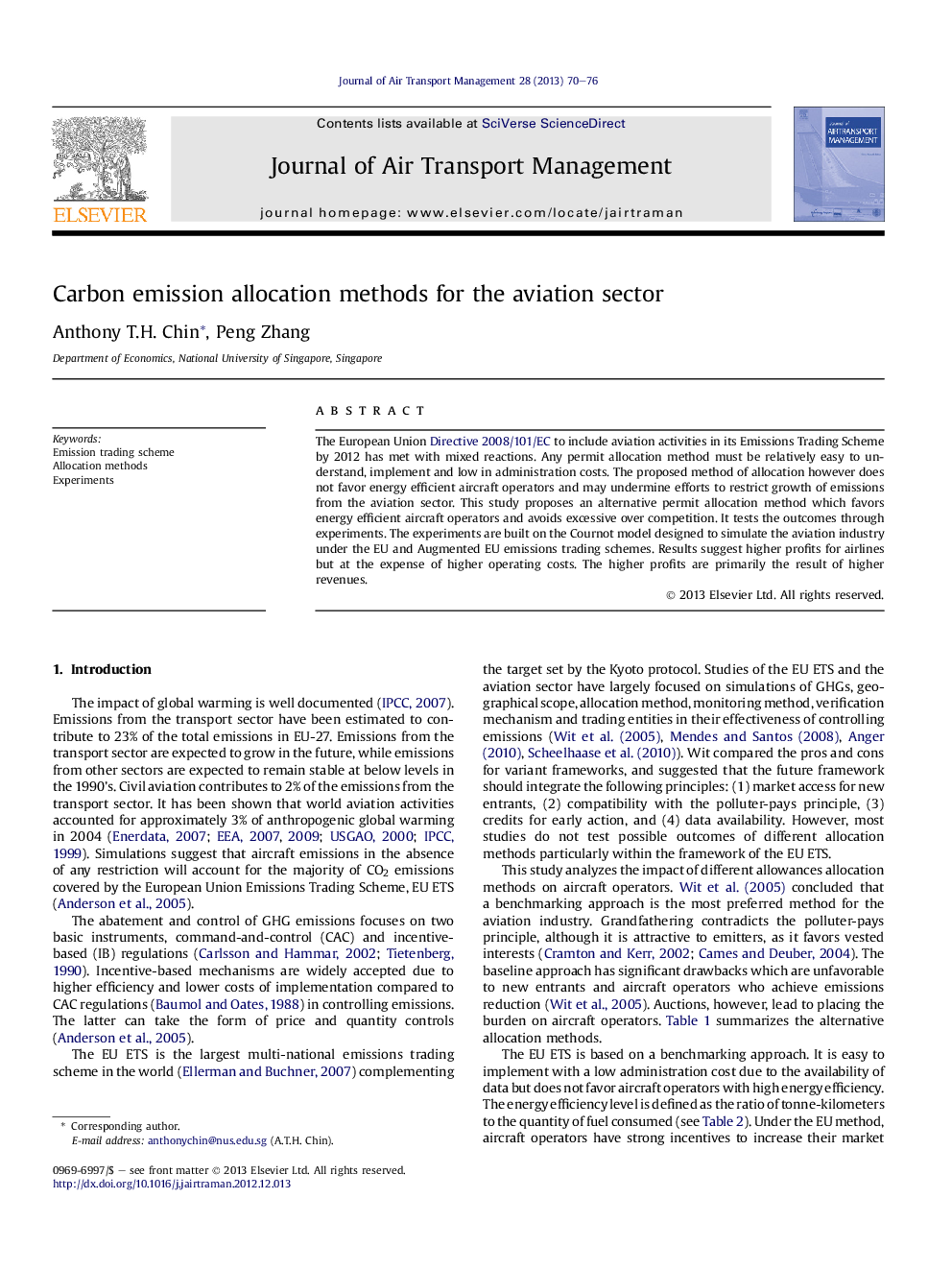| Article ID | Journal | Published Year | Pages | File Type |
|---|---|---|---|---|
| 1030966 | Journal of Air Transport Management | 2013 | 7 Pages |
The European Union Directive 2008/101/EC to include aviation activities in its Emissions Trading Scheme by 2012 has met with mixed reactions. Any permit allocation method must be relatively easy to understand, implement and low in administration costs. The proposed method of allocation however does not favor energy efficient aircraft operators and may undermine efforts to restrict growth of emissions from the aviation sector. This study proposes an alternative permit allocation method which favors energy efficient aircraft operators and avoids excessive over competition. It tests the outcomes through experiments. The experiments are built on the Cournot model designed to simulate the aviation industry under the EU and Augmented EU emissions trading schemes. Results suggest higher profits for airlines but at the expense of higher operating costs. The higher profits are primarily the result of higher revenues.
► The European Emissions Trading Scheme by 2012 has met with mixed reactions. ► The proposed method of allocation does not favor energy efficient aircraft operators. ► This study proposes an allocation method which favors energy efficient aircraft operators. ► We use the Cournot model designed to simulate the industry under EU emissions trading schemes. ► The results suggest higher profits but higher operating costs of airlines.
